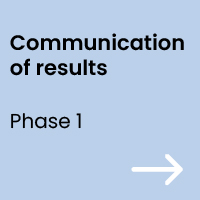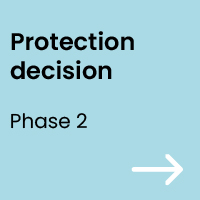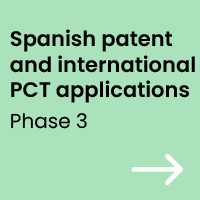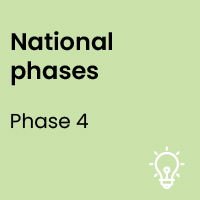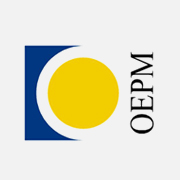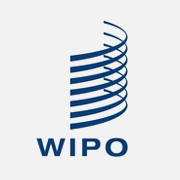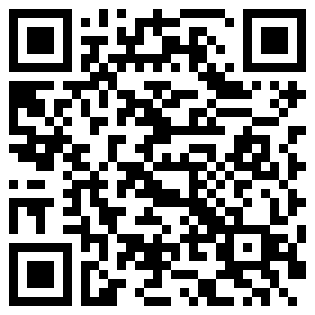It should be noted that Intellectual Property Rights (IPR) encompasses both industrial and intellectual property.
In Spain, “Industrial and Intellectual Property Rights” comprise several legal modalities, all of which deal with intangible goods or assets, which protect intellectual creations and, when well-managed, can add value to the innovation system and to social and economic development.
Industrial property rights protect technical productions (inventions e.g. patents and utility models, plant breeding, topographies of semiconductor products) and design creations (industrial designs and the modalities that protect corporate identity e.g. trademarks and trade names).
All industrial property rights share a number of characteristics:
- Industrial property rights are acquired through registration.
- Industrial property rights give the holder an exclusive right or monopoly over the exploitation of the results and give the holder the right to take legal action (civil or criminal) against third parties who infringe these rights.
- Industrial property rights “expire”, meaning they have a duration and, once expired, they pass into the public domain.
- Industrial property rights are limited to the territory in which the registration is made and they can only be exercised in the territories (countries) in which they are registered.
- IP can be transferred by any legal admissible means: licence, assignment, sale, pledge, mortgage. The most common means is usually a licence, i.e. an authorisation for use in exchange for financial compensation.
- Certain requirements must be met in order to generate industrial property rights, which differ according to the specific right (patent, design, trademark).
Patents and utility models
There are different types of industrial property, the most important of which, due to its commercial value, is the patent. For a research result to be considered an invention and, therefore, to have the characteristics to be patentable, it must meet three requirements:
- Novelty: It must not have been made accessible to the public by a written or oral description, by use, or by any other means.
- Inventive activity: It must not be obvious, with regard to the state of the art, to a person skilled in the art (for utility models it must not be highly obvious, with regard to the state of the art, to a person skilled in the art).
- Industrial application: It must be able to be manufactured or used in any kind of industry, including agriculture.
A patent is an industrial property title granted by the State to the holder of an invention. In exchange for being released to the public, the patent holder has the exclusive right to exploit the invention, preventing others from manufacturing, selling or using it without his/her/their consent, in a specific territory for a specific period of time (20 years from the date of filing the patent application). The patent gives the patentee the right to exclude third parties from exploiting the invention in the country in which the patent has been granted. The inventor will need to make as many applications as countries in which he/she/they wish to obtain these rights.
The following are not patentable:
a) Discoveries, scientific theories and mathematical methods.
b) Literary, artistic or other aesthetic creations, as well as scientific works.
c) Plans, rules and methods for the pursuit of intellectual activities, for games or for economic and commercial activities, as well as computer programmes.
d) Forms of presentation of information.
Patents and utility models are regulated in Spain by the Patent Law, 24/2015 of 24 July and the body in charge of registering and processing patents is the Spanish Patent and Trademark Office (SPTO). On its website you can find much more information about industrial property.
The utility model protects inventions with a lower inventive range than those protected by a patent. It also confers a temporary monopoly of exclusive exploitation of a technology, although this is for a period of 10 years from the date of filing the utility model application. Processes, biological material and pharmaceutical substances and compositions cannot be protected by a utility model.
Trade secret:
Any information or knowledge, including technological, scientific, industrial, commercial, organisational or financial, which meets the following conditions, shall be considered to be a trade secret:
a) It is a secret--either as a whole or in the precise configuration and assembly of its components--and is not generally known, or readily accessible, by persons within the circles in which the type of information or knowledge in question is normally used.
b) It has business value, either actual or potential, precisely because the information is not publically known.
c) The holder has made reasonable efforts to maintain its secrecy.
Rather than being a total and comprehensive system of protection, a trade secret is a legal obligation for certain persons involved to take active measures in order to protect the secret.
It should be noted that any publication of results by any means--journal, congress, book, etc.--makes the information available to the general public, precluding any possibility of legal protection, as it has been published voluntarily.
The publication of results in journals and other relevant media is fundamental to a researcher's scientific career, and does not prevent or prohibit the communication of results and their protection. However, the publication or disclosure of a relevant research result must only take place after the protection process has been initiated. It is possible to publish and protect, but always in the right order-- first patented and then published. The day after the patent application is filed the results can be published because the novelty of the patent will be analysed starting from the date of the patent application. If it were published before patenting, the novelty of the result would be broken and it would therefore no longer be patentable.
It is best to send a communication of the result to the entity to which the researcher is connected well before dissemination and always communicated planned publications on reported results.
Another possibility to consider is a result that despite being valuable and providing new knowledge relevant to society, cannot be legally protected due to its characteristics. In this case, before making the result public, the holder of the result should consider keeping the novel part of the knowledge secret, so that this know-how is exclusive and not reproducible by others. This option allows a return of resources to the research group or researcher as contracts or licences can be made on the basis that this know-how is kept as a trade secret.
Intellectual Property, which includes literary, scientific and artistic creations, computer programs, etc., differs from industrial property in that the right arises through creation, without the need to go to any registry for the acquisition of the right. Although registration is not required to own the right, as registration is voluntary, the Law regulates the existence of an Intellectual Property Register in which to register these types of creations. Registration constitutes qualified proof of the existence of the registered rights.
Intellectual property is regulated in Spain by Royal Legislative Decree 1/1996, of 12 April, which approves the revised text of the Intellectual Property Law, regularising, clarifying and harmonising the current legal provisions on the subject, as well as by Law 2/2019, of 1 March, which amends the revised text of the Intellectual Property Law.
Intellectual property includes all original literary, artistic or scientific creations expressed by any means or on any medium, such as:
a) Books, pamphlets, printed materials, correspondence, writings, speeches and addresses, lectures, forensic reports, lecture notes and any other works of the same nature.
b) Musical compositions, with or without lyrics.
c) Dramatic and dramatic-musical works, choreographies, pantomimes and, in general, theatrical works.
d) Cinematographic and any other audiovisual works.
e) Sculptures and works of painting, drawing, engraving, lithography and graphic cartoons, comic strips or comics, as well as sketches thereof and other visual art works, whether applied or not.
f) Projects, plans, models and designs for architectural and engineering works.
g) Charts, maps and designs relating to topography, geography and, in general, to science.
h) Photographic works and works expressed by a process analogous to photography.
i) Computer programmes.
The copyright attributed by Intellectual Property can be divided into two main blocks:
a) Personal or moral rights: Irrevocable and inalienable rights that do not lapse, but rather accompany the author, creator or performer throughout his/her/their life, and pass to his/her/their heirs or successors in title after the death of the author, creator or performer. These include the right to recognition as the author of the work or the recognition of the name of the performer on his/her/their performances, and the right to demand respect for the integrity of the work or performance and its non-alteration.
b) Economic rights or exploitation rights: these are rights that can be transferred by the author and be traded, thus allowing the holder to authorise or prohibit the exploitation of the work by another entity or person, and to demand payment from the latter in exchange for the authorisation granted. They include the rights of reproduction, distribution, public communication and transformation.
The duration of these exploitation rights according to Spanish law is the life of the author plus 70 years from his/her/their death.
Software
In Spain and Europe, computer programmes are not considered patentable inventions. However, it should be borne in mind that, despite the exclusion, under certain conditions, a computer programme can be protected by a patent.The possibility and suitability of this protection mechanism will have to be studied on a case-by-case basis. These patentable programmes are so-called Computer-Implemented Inventions, which involve the use of a computer, a computer network or any programmable apparatus and require one or more technical features that are fully or partially realised by means of a computer programme. They are considered to have technical characteristics, e.g., the control of an industrial process, the processing of data representing physical quantities or an image retrieval system.
In other words, a computer programme is not excluded from patentability if, when executed on a computer, it produces a new technical effect that goes beyond the simple physical interactions between the computer programme (software) and the computer (hardware).
For more information, please consult the Guide for the research staff of the University of Valencia for the protection of Intellectual Property Rights.
A result obtained with the participation of research staff from the Universitat de València must be communicated whenever this result involves new knowledge with the potential to be transferred (contract, licence, etc.) or provides added value to known knowledge.
In the case of inventions (patents and utility models) and secrecy, the result must be communicated in writing within three months of the completion of the invention and always before disclosure or submission for publication.
To submit a communication of a result, see the associated procedure.
After communicating a result
Law 14/2011 of 1 June 2011 on Science, Technology and Innovation regulates that the right to apply for titles and use the appropriate mechanisms for safeguarding industrial or intellectual property, plant varieties and trade secrets for their legal protection belongs to the entity to which such research personnel is linked, unless the entity expressly renounces this right in writing.
Therefore, upon receipt of the signed outcome communication document together with the full presentation, the staff of the Innovation and Valorisation Section will contact the person responsible for the result to start the evaluation process and will request any additional documentation that may be necessary.
Within a maximum period of three months from the date of formal communication (signed communication and full presentation of the result), the responsible person will be informed of the UV's willingness or not to maintain its rights to protect and/or exploit the result. This period will be interrupted if additional information is required and will remain suspended while said information is provided, such as further experimental development.
If the inventor wishes to maintain his/her/their rights over the invention, he/she/they must apply for the corresponding patent or utility model, or decide to consider it as a trade secret. In the latter case, the exclusive right of use is reserved. The result of patentable research may not be published before the expiry of this period or until the patent application has been filed.
Patentability analysis and patent drafting
Once the communication of the result with the full exposition has been received, the documentation will be analysed and the interest in protecting the result of the research will be determined, as well as the most appropriate mechanism for its best protection and eventual exploitation.
If the prior assessment carried out by the Innovation and Valorisation Section considers that there is potential for patent protection, a patentability report is requested from an industrial property agency or the Spanish Patent and Trademark Office (SPTO) –in this case it is called a Patent Technological Report (TPR).
If the result of the report is favourable, it would meet the requirements for patentability, the patent application is drafted by an industrial property agency hired by the UV. During the process of the patentability report and the drafting of the patent application, the collaboration of the result’s inventor staff is necessary.
Types of patent applications
In Spain there are three options for applying for legal protection of inventions:
a) Nationally, regulated by Law 24/2015 of 24 July, on Patents. The applicant can directly file several patent applications at the same time in all the countries in which the inventor wishes to protect the invention. The patent application in Spain must be filed with the Spanish Patent and Trademark Office (OEPM), which is responsible for processing and granting the Spanish patent title.
b) Through the European network, regulated by the Munich Convention on the Grant of European Patents. The European Patent Office (EPO) is responsible for processing and granting the European patent title, which produces the same effects in each of the countries for which it is granted as a national patent.
c) Internationally, regulated by the Patent Cooperation Treaty (PCT). The applicant may file an application under the PCT, either directly or within 12 months from the filing date of the first application, e.g. Spanish or European.
The inventors in a patent are those who make the creative and inventive effort that gives rise to the invention. Currently, most of the activities that generate protectable knowledge are carried out in companies, universities and public research organisations. This makes it necessary to regulate to whom and under what conditions the results of research carried out by employees in the course of their work belong.
The Spanish Patent Law 24/2015 states in its article 21 that the ownership of inventions made by its research staff belongs to the University and outlines the obligation of the researchers to communicate inventions in writing to the public entity.
Thus, the ownership of the invention and the rights to its commercial exploitation are vested in the University, with the research staff entitled to a share of the profits. Research staff also have the moral right to be listed as inventors, a right that cannot be waived.
The researchers’ share of the benefits of inventions is included in section 4 of the same article 21, which regulates the inventors' right to share in the benefits obtained by the University from these inventions. The regulation of this matter corresponds to the Governing Council of the University and is included in the different University Statutes. In the case of the Universitat de València, the share in these benefits is set out in article 145 of its Statutes.
Article 35 of Law 14/2011 on Science, Technology and Innovation also regulates that exploitation rights, as well as those associated with transfer activities carried out on the basis of industrial or intellectual property, plant varieties or business secrets, shall correspond to the entity to which the author is linked, as well as the right of the authors to share in the profits obtained by the entity.
In the event that the results have been generated in collaboration with inventors or authors not belonging to the Universitat de València, the University would not be the sole owner of the rights of the result, but rather the ownership would be shared with other legal entities or individuals. This shared ownership is regulated through a co-ownership agreement, which, in addition to the percentages of ownership of the result, also regulates the rights and obligations of the parties and assigns responsibilities in the process of protection and commercialisation of the result.


